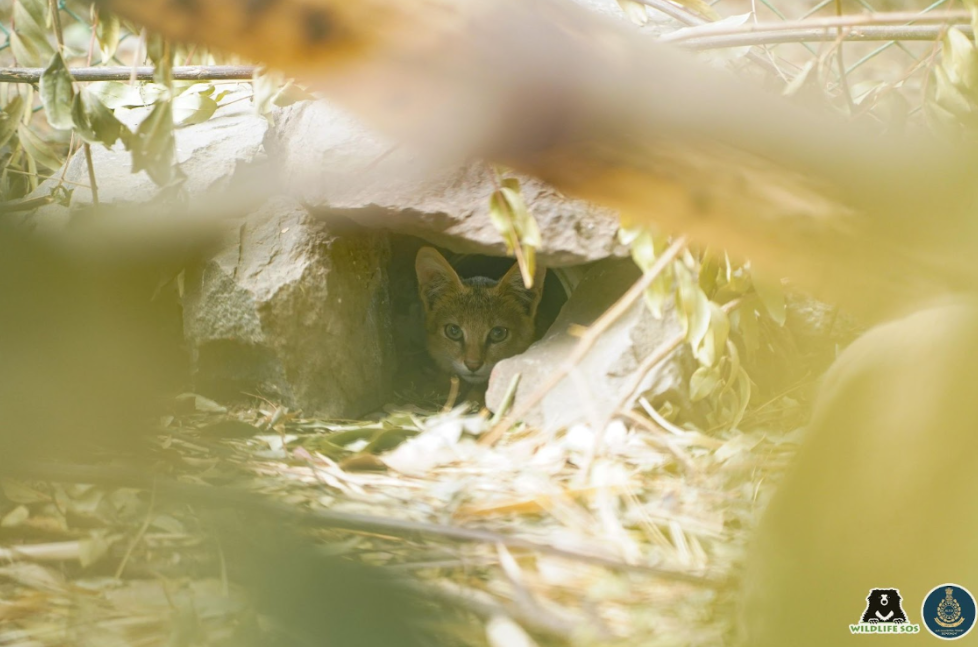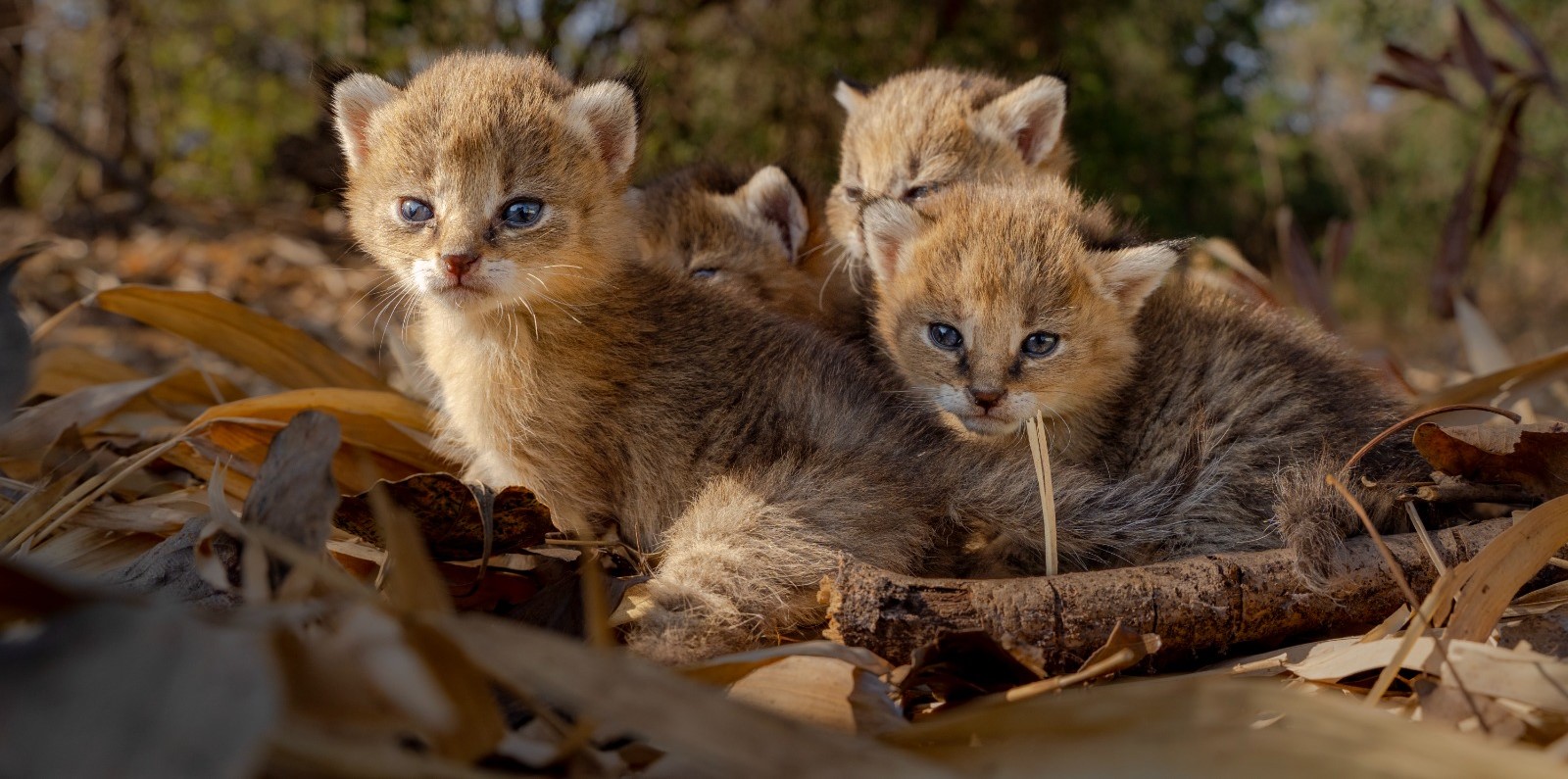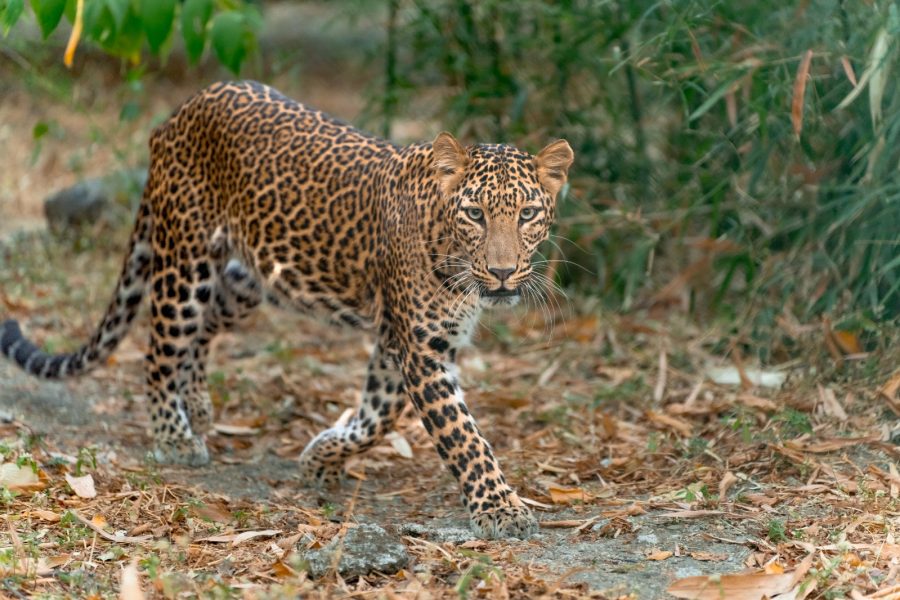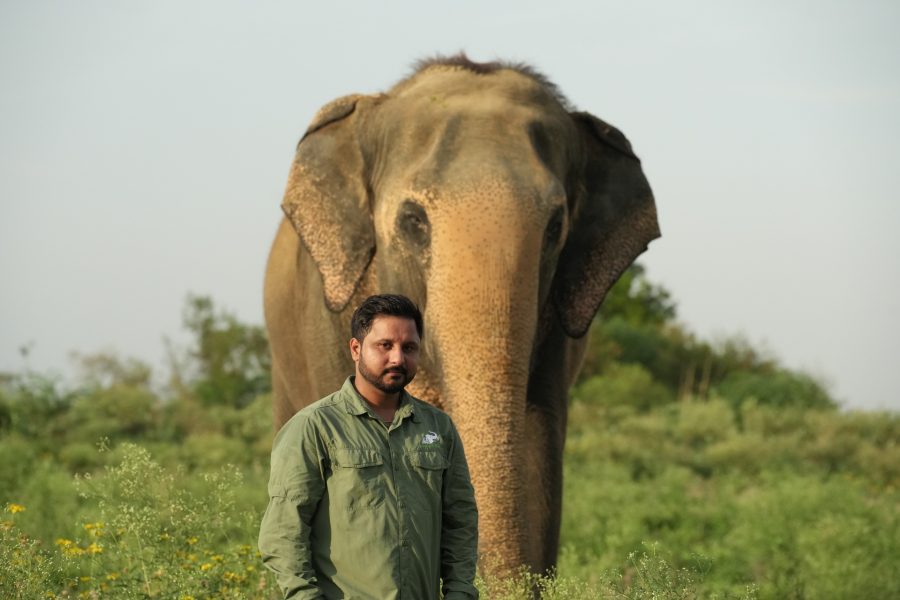When an infant animal is born in the wild, the mother is typically the primary caregiver, playing a crucial role in its survival. Mothers impart essential life skills, such as how to forage, hunt, and sustain themselves in their natural habitat. Through these teachings, the infants gradually grow to become independent, leading a life of their own. But what happens when the mother is not there to pass on these life-saving skills to her newborns?
Wildlife SOS recently rescued and cautiously released four jungle cat kittens, which came into the organisation’s care this spring after being discovered in the Otur Forest Range in Maharashtra. The kittens were only a few days old when they were found. With no sign of their mother, despite earnest efforts by the Maharashtra Forest Department and Wildlife SOS to reunite the kittens with her, the helpless baby cats were left alone and in dire need of attention. They required intensive supervision until they were old enough to be on their own in the wild. A soft release mechanism was therefore initiated and applied by Wildlife SOS to secure their lives.
The jungle cat kittens were given around-the-clock care from the dedicated Manikdoh Leopard Rescue Centre (MLRC) team. In the initial days of their arrival at the centre, the felines were fed what resembled their mother’s milk, and they gradually transitioned to solid foods as they grew a little older. During this period, they spent significant time in a specially designed outdoor enclosure at the MLRC that closely mimicked their natural habitat, allowing them to develop essential survival skills in a safe environment.
After approximately three months under care, the kittens were ready for the next phase that would prepare them for a smooth release. A small opening leading towards the jungle was created in their field as part of a soft release protocol, enabling the infant jungle cats to explore and adapt to their natural habitat at their own pace.
While the kittens were beginning to adjust to the forest environment, our team ensured that supplemental food was also provided to them for their healthy sustenance till they began to fend for themselves. To check on this, caregivers at MLRC kept a track of the kittens in the wild through hidden camera traps so that human interference is avoided. Assessing their self-sufficiency led the team to gradually decrease the provision of food for the growing jungle cats.
What is a Soft Release and Why is it Needed?
The absence of the mother for the jungle cat kittens was a critical challenge for the newborns in the wild. Without maternal guidance, these infants would be deprived of basic skills necessary for survival, such as finding food, avoiding predators, and navigating their environment. This scenario has time and again presented itself to wildlife conservationists, who step in to fill this void so as to save the lives of baby animals. Temporary rehabilitation of orphaned animals and reintroducing them into their natural environment is a complex and delicate process. Conservationists eventually take a mindful decision of securing their release, which can be done in two ways: soft release and hard release.

Soft release is a methodical approach to reintroduce rescued animals to the wild. This process involves the gradual acclimatisation of animals to their habitat, providing them needed support as they do so. Since rehabilitated animals require time to successfully adapt to the wild, conservation centres provide them with additional food and a secure shelter as backup, and monitor their movements as they venture into the surroundings to check on their progress. This period allows the animals to heal and build strength, refine their natural behaviours, and establish territories. The unhurried nature of this method enhances their chances of survival, and confirms their integration into the forest.
An important factor that needs to be considered while implementing a soft release protocol is avoiding permanent human dependency of the released animal. To deter this reliance, caregivers gradually lessen the food that they leave out for the animal before eventually stopping it altogether. This ensures the independence of the animal to apply its inherent skills and actions in its natural habitat, without any human intervention.
In addition to this, caregivers of rescued orphans often implement programmes that help them to develop their wild instincts and skills while they are under short-term care. These include training periods in foraging, predator avoidance, and social interactions with conspecifics. To simulate natural challenges and experiences the animals would tackle in the wild, strategically designed enrichments are also placed for them to boost their abilities.
In contrast to soft release, hard release entails an immediate reintroduction with minimal to no post-release support. While this method is quicker in reintegrating the animal into the wild and completely eliminates the chances of relying on humans, this can be riskier for baby animals than most adult ones as the latter are already familiar with survival tactics. Without the transitional support provided in a soft release, animal babies are left to rapidly adapt to their environment and look after themselves. This sudden adjustment can lead to higher mortality rates and a lower chance of acclimatising to the wild.
Ultimately, the goal of reinstating wildlife back into the wild is to ensure that the animals have the best possible chance of surviving and thriving in their natural habitat. Whether through soft release or hard release, Wildlife SOS is constantly innovating and incorporating wildlife conservation practices suitable to the animal that the organisation rescues. To contribute towards the organisation’s work in wildlife conservation, please consider making a donation.





